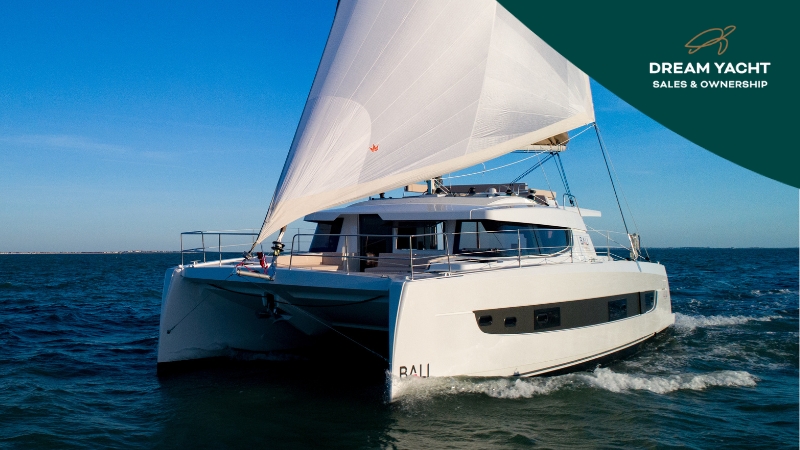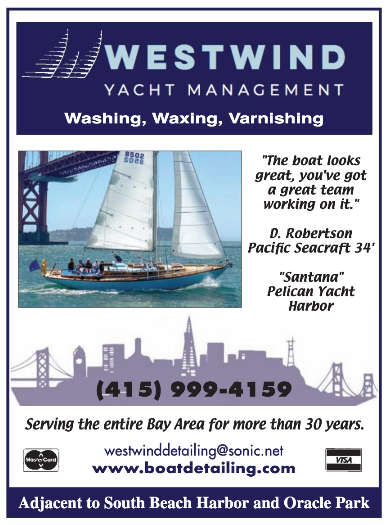
Clouds Part for the CYC Midwinters
Although we’ve opened this story with a misleading headline, the racing at this weekend’s CYC Midwinters was remarkably good given the rainy forecast. About 60 boats showed up despite rainy nights, and luckily for them, the gaps in the rain fell conveniently during the afternoon racing hours. It was just about perfect.
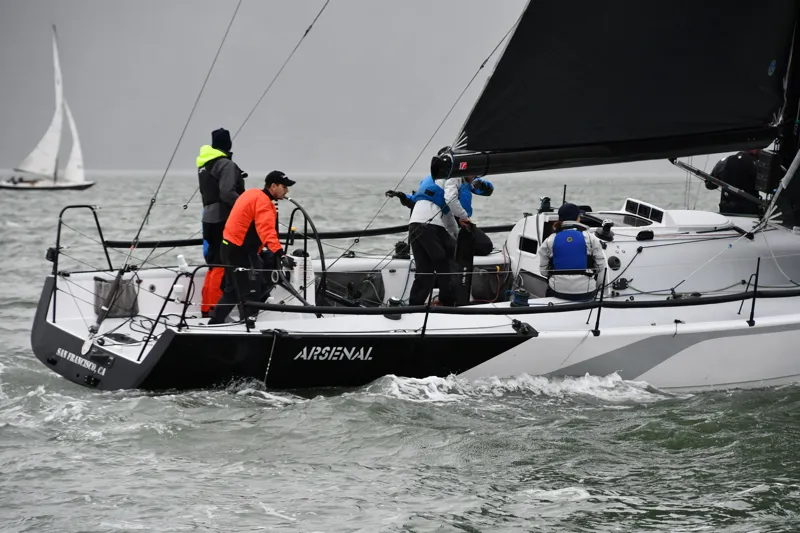
Both Friday and Saturday nights were rainy, but as the 12:30 starts approached, the weather backed off, the skies brightened, and the breeze was steady on Saturday, and lighter on Sunday but enough to get everyone around the course.
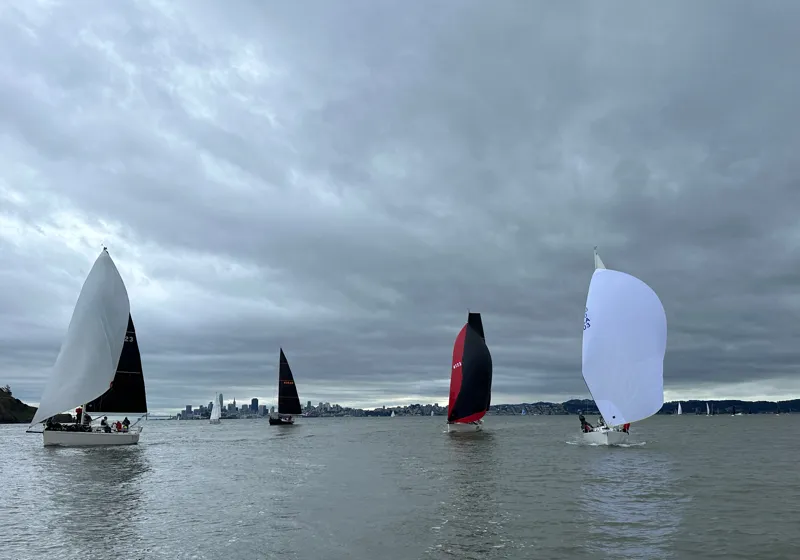
The ebb was a significant factor, teaching a couple of boats about being upstream in light air as they left bottom paint on the anchor rode of the committee boat. Fortunately all boats were cleared of entanglement in time to keep everyone reasonably on schedule. The only hiccup was a General Recall for the aggressive Class C, which collectively misjudged the strength of the ebb vs. light air and crossed the line early en masse. Most of them got it right the second time.
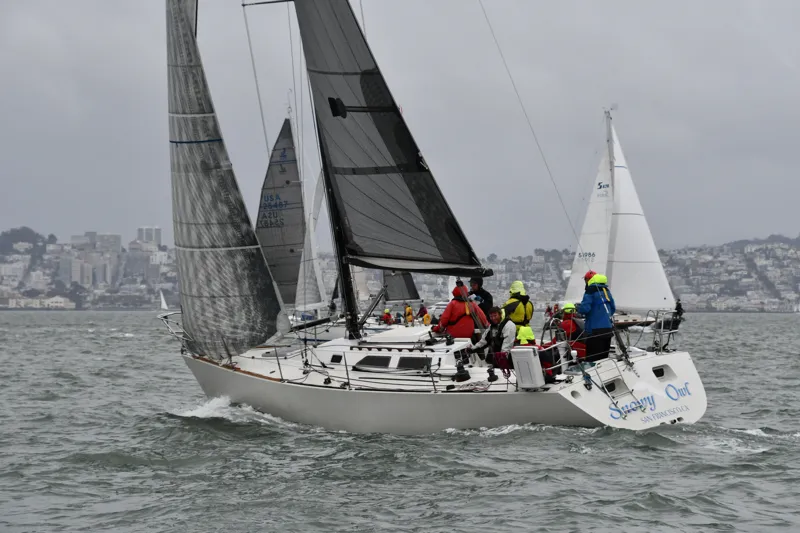
Due to the strong ebb, the starts off Knox buoy appeared farther southeast than we’re used to. We’re not sure if it’s true, but one buoy was definitely off station on Saturday, as three classes found rounding Mark 6 off Fort Mason was not possible because the mark was not there. Without a mark in place, Saturday’s race for PHRF 3 and 4 and Express 27s had to be abandoned. (Note to YRA) Courses using Mark 6 were wisely not used on Sunday!
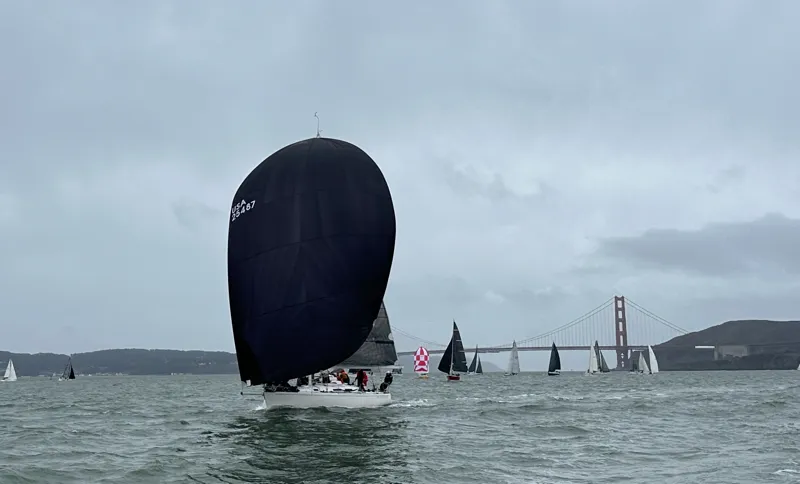
Foul weather gear was the fashion for the weekend, but for those hoping to use the rain to rinse the salt out of the gear it didn’t work out. The rain on the race course never materialized. That chore will have to be saved for another rainy day.
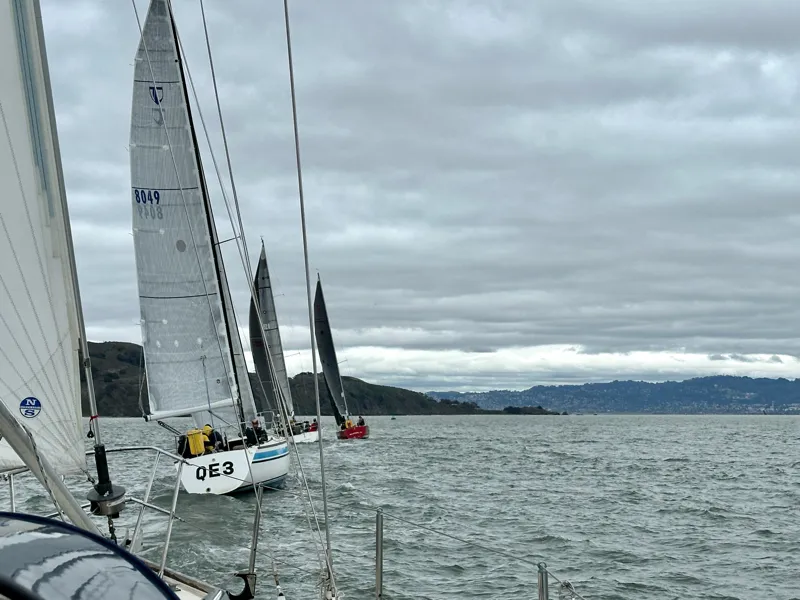
For Sunday’s light air, several classes spent lots of time avoiding getting sucked out the Gate as they battled to round Easom buoy. It was just a sign that more people wanted to spend time with Hank.
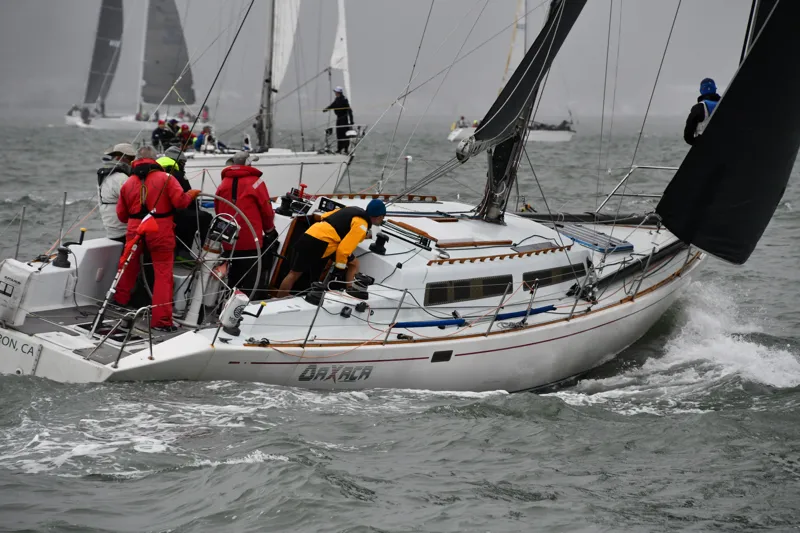
The weekend was another reminder of why we sign up to go racing. Without a race commitment on our schedule it would have been easy to wake up on both Saturday and Sunday mornings, look out the window, and decide there were better things to do than go sailing. Thankfully we were signed up, had willing crew, and were rewarded with two great days of racing. We’re looking forward to next month, and pledge always to remember how great it is to get out on the Bay, despite gray clouds and questionable forecasts.
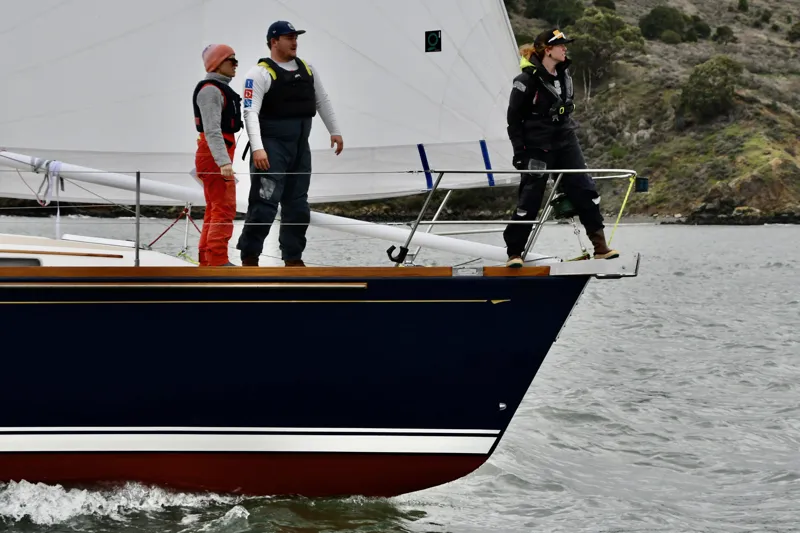
There are 277 boats signed up for Saturday’s Three Bridge Fiasco! Yes, there are a few showers predicted for the morning. Are you going to let that stop you? The deadline to sign up is this Wednesday, the 24th. Rainy days are always good for puzzles, and one of the best puzzles of the year is solving the puzzle of the Three Bridge Fiasco. You can sign up here. If you’re lucky you have another chance to rinse the salt off your foul weather gear.
PCYA Seeks Nominations for Garrett Horder Trophy
The Pacific Coast Yachting Association (PCYA) is seeking nominations for the 2023 Garrett Horder Memorial Trophy. The trophy seeks to recognize excellence in youth sail training. It was introduced in 2000 and each year is awarded to “the member organization judged to have shown the greatest improvement in its Junior Boating Education program.” Nominations are open to youth boating programs from Southern California to British Columbia, though the nomination does have to come to the PCYA from one of the organization’s constituent regional associations. Current PCYA commodore Kimball Livingston says, “That’s not hard to arrange,” so youth sailing organizations are encouraged to make a submission.
Last year’s award, the 2022 Garrett Horder Trophy, went to the Peninsula Youth Sailing Foundation (PYSF) in Redwood City. “They have a gangbusters learn-to-sail program and a robust racing component,” Livingston wrote. Operating under the guidance of 2012 Olympian Molly O’Bryan Vandemoer, PYSF provides instruction, coaching, practice, and racing opportunities for kids from age 6 through high school.
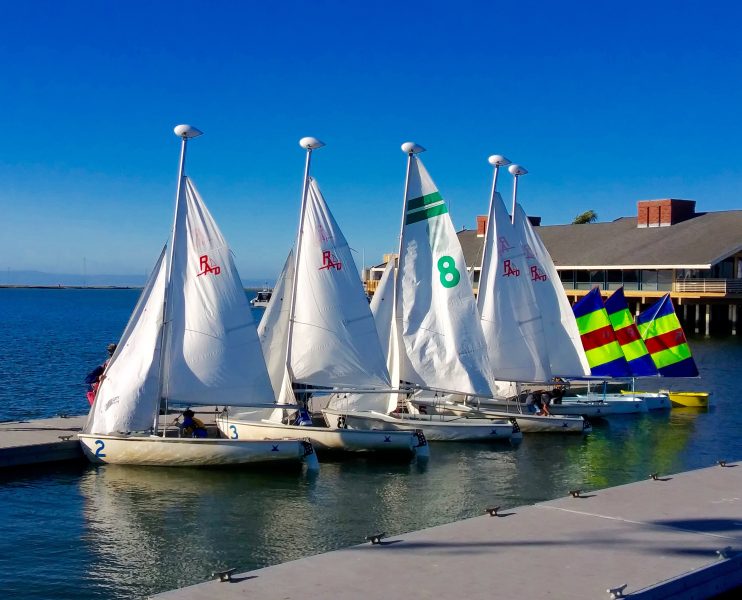
“What a fantastic honor for our program to receive the Garrett Horder Award for best junior program on the West Coast!” Vandemoer said upon being advised of the award last year. “When I came to PYSF just over 10 years ago, I was drawn to the sense of community and love of the sport that I found here. I saw amazing potential in a relatively small group of passionate folks. Now here we are, thriving, thanks to rock star coaches, supportive community members, volunteers willing to help in any way they can, and kids that love our sport. A big thank-you and pat on the back to all.”
The previous year’s award went to San Diego’s Silver Gate Yacht Club Junior Program. This non-racing junior program won the trophy, in part, because it teaches the pure love of sailing instead of competition. The Silver Gate YC’s program is designed around a small physical footprint and a high instructor-to-student ratio. Program director Kent Prater said at the time, “Making sailors for life is our priority, and we don’t take it lightly. We believe that pressure to always compete drives too many kids away from a sport they could enjoy for a lifetime.” In his submission to PCYA, while paying respect to racing programs that also turn out lifelong sailors, Prater described his system as complementary, attracting certain kids who experience Silver Gate’s offerings as a safety valve from the sharp focus of competition.
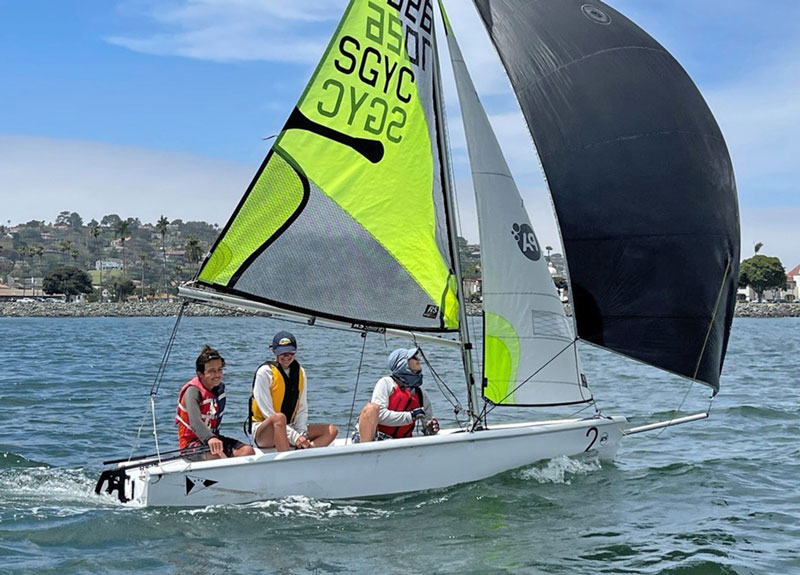
The Garrett Horder Memorial Trophy, a famed Currier and Ives print of the sail/steam vessel San Francisco, is over 100 years old and occupies a prominent mantel position at St. Francis Yacht Club. The original trophy remains in place while, each year, an engraved plaque inscribed with the name of the honored program is added to the original trophy’s list of awardees. A handsome keeper copy of the trophy is presented to the winning club.
It certainly sounds like a worthy trophy for a worthy recipient program. We know there are several youth programs around the Bay and along North America’s West Coast, so how about it? Do you know of a youth sailing program that could meet the award criteria? They’d be in good company.
You can see the full list of winners from 2000 onward here, and the judging guidelines here.
Email your submission in PDF or Word format to PCYA Commodore Kimball Livingston: [email protected].
Submissions close on February 1.
Get Your Own Catamaran Now
Dream Yacht has immediate availability for a beautiful BALI 4.4. catamaran to join the popular Dream Performance ownership program in select destinations in the Caribbean. Yacht ownership programs like Dream Performance can help you offset the cost of your yacht and take the hassle out of owning a boat.
Dream Performance at a glance:
– Rental income paid quarterly
– Possible Tax Advantages
– Extensive, flexible use of your yacht
– Comprehensive management with all-inclusive maintenance and services
With more destinations than any other charter company and 7 world famous yacht brands to choose from, Dream Yacht offers you more choice than anyone else.
Private ownership (retail) pricing is also an option for this yacht, starting in the mid 800Ks, and many of the other currently available models. Contact Dream Yacht Sales & Ownership for more details.
Blue Skies and Sunshine Grace the Potter Yachters’ 2023 Bridges Sail
We realize the year is now 2024, but 2023 was just “the other day,” and it was on a couple of those days that the Potter Yachters enjoyed their annual Bridges Sail through the Delta. Bud Kerner sent us this story.
The 2023 Bridges Sail is in the books. I am not sure, but this could be the 12th one I have organized, and by far it was the best sailing Bridges we have ever had. There were some years that included a section of white-knuckle sailing, but this year was well-balanced. We sailed from the Rio Vista Bridge to the Isleton Bridge in a brisk wind. Not far from the Rio Vista Bridge, Hoot, the pontoon boat I was on, developed engine trouble. I made an on-the-water transfer to Goose’s P19, and Hoot headed back. Hoot has been the backup boat on a number of Bridges sails. It has towed several boats over the years, including mine.
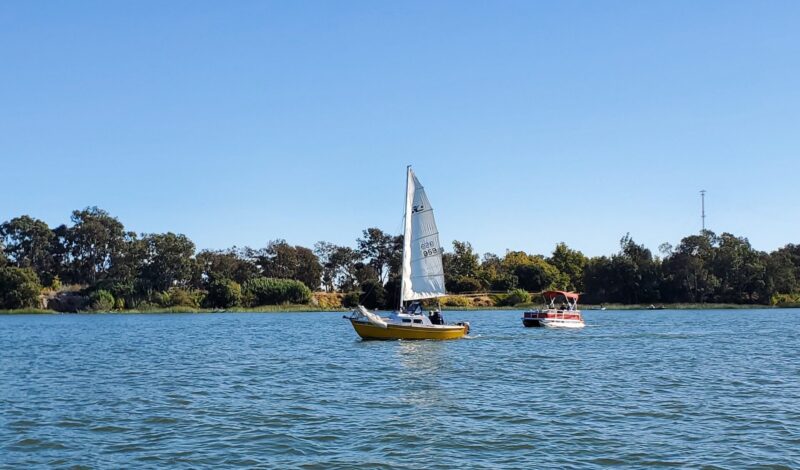
The Isleton Bridge turned 100 years old the day before we arrived. After the Isleton Bridge, we turned to port and had the wind on our noses. Steve, in his beautiful Sanderling catboat, continued to tack up the river. It was hard to make progress against the ebb current. They still made it in time for lunch. The rest of us motored to Ko-Ket Resort for lunch.
We motorsailed to Georgiana Slough. I actually missed the entrance to the slough — there were red buoys and signs saying “no boating.” It turns out it is some sort of electronic device to discourage salmon from entering the slough. Their survival rate is much higher on the Sacramento River.
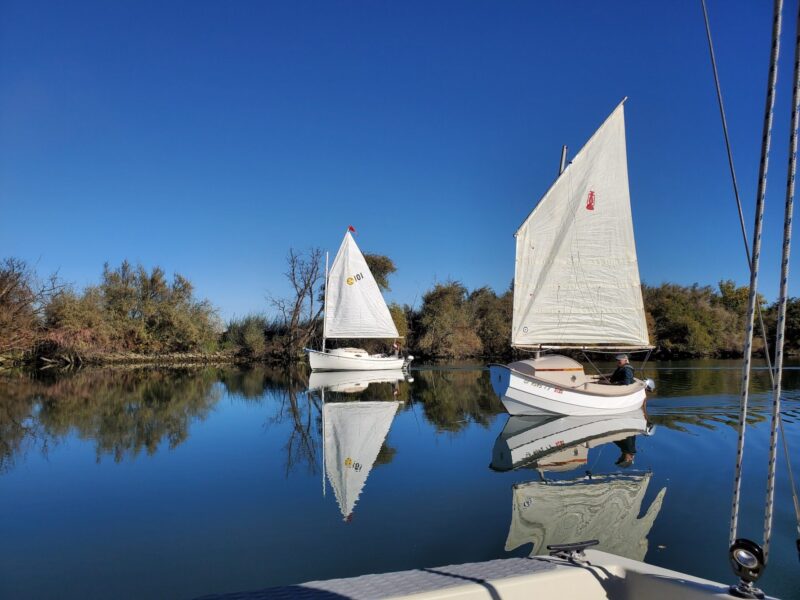
On Georgiana Slough, Larry, in his Montgomery 15, got too close to the shore and had an encounter with a tree branch. I had looked back just as it happened: His bow lifted way up out of the water. For some reason after the mishap, his engine would not restart. Goose, with his 50-horse engine on his P19, towed him to the marina. We passed through the last two bridges of the day to Ox Bow Marina for our overnight. The Potter Yachters provided dinner of pizza, which my better half Bobbi delivered from Rio Vista.
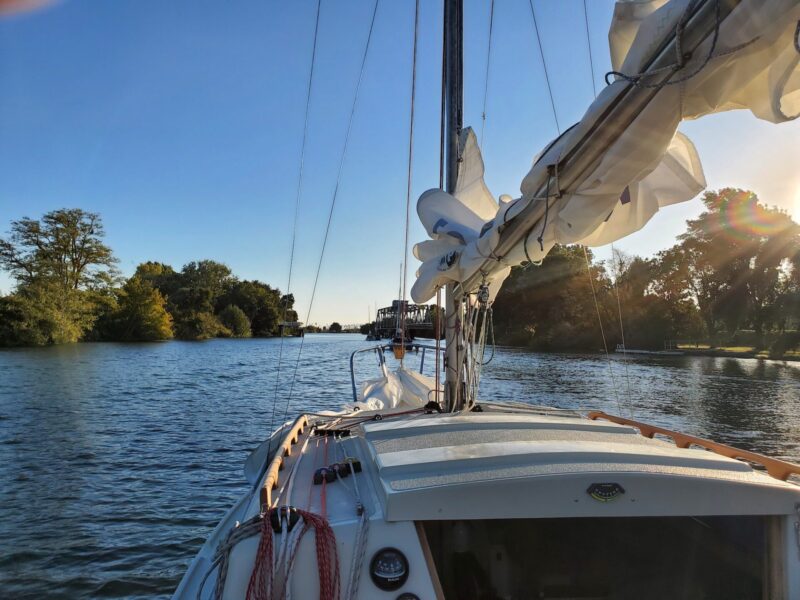
Sunday morning we discovered that the marina, unlike what I’d been told, was not supplying a continental breakfast. Luckily there was enough pizza left over that we had pizza for breakfast. Mark Sabin supplied coffee. Thanks, Mark.
Goose had a spare Honda 2.3-horse outboard in their camping van. They put that outboard on Larry’s Montgomery and he used it for the rest of the sail.
The fleet motored down the slough to the Mokelumne River and passed through the Route 12 bridge to the San Joaquin. There was excellent sailing on the river, and we sailed all the way to Three Mile Slough, where we encountered a two-mile-an-hour current against us. Once through the last bridge and back on the Sacramento River, we sailed back to Rio Vista.
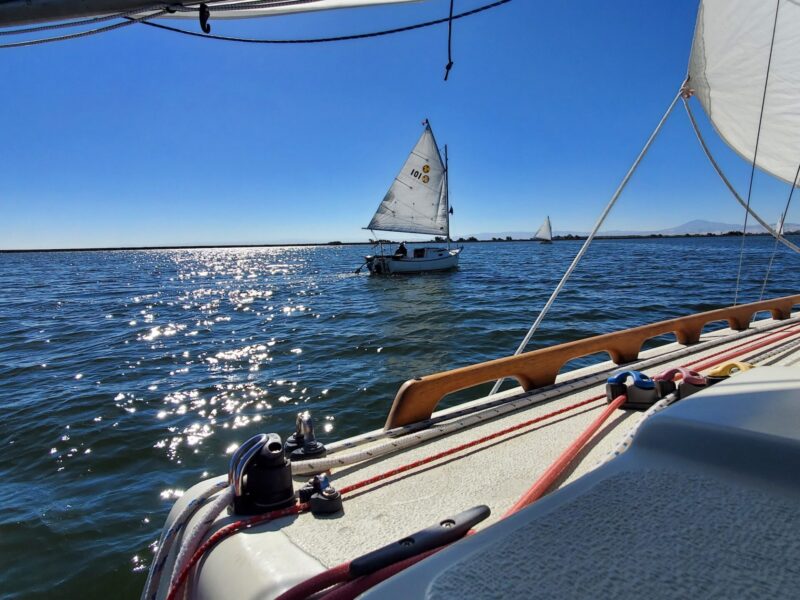
What makes any sail you host a great sail is when all the boats that started finished. This was a great sail. I am not counting Hoot, of course.
We have many more stories about the Potter Yachters, including this one about their Halloween sail in 2021.
Relax by reading our monthly print publication when you subscribe for you or a friend by clicking here.
Examining the Current Culture and Demographics of College Sailing
In July 2021, we reported on an examination of diversity and inclusion in collegiate sailing. The initial survey was conducted by the Intercollegiate Sailing Association (ICSA), which formed the Inclusivity, Diversity, and Equity Task Force (TIDE). Its mission was to explore the stereotypes and assumptions around sailing demographics, and to track future cultural and demographic changes within the sport competitively.
That first TIDE survey examined the data received from a total of 1,086 athlete responses and 63 coach responses. According the the data, “Women are no longer an underrepresented gender, despite enduring discrimination. Of the survey participants, 56% identified as women, 42.2% identified as men, and less than 1% identified as non-binary.” And although women reported that they still faced discrimination, the numbers revealed other truly underrepresented groups.
The most recent survey, conducted in February 2023 (the results of which have only recently been released), assessed responses from 46 coaches and 551 athletes. Although this is a significant drop in the number of participants from those quoted in the previous report, we scanned through the tables to see what this group had to say about inclusivity and diversity in collegiate sailing.
The survey opened with a few basic questions about how participants were introduced to sailing and then racing. Just shy of 50% said they learned to sail before the age of 9, and a little less than half reported having been introduced to the sport by a family member. This was followed by yacht club and community sailing programs.
TIDE’s committee says it aims to develop a “welcoming and inclusive culture for College Sailing.” The survey is one way in which they measure the success of their initiatives toward making the sport welcoming to people of all backgrounds and skill levels. As the survey moved into the deeper questions, participants were asked to respond to direct questions in which they could share their personal experiences.
Two responses that stood out for us were, “As a sailor without any prior experience, my joining of the team deeply upset the members of my team and I was treated both on the water and off the water with negativity. Among some of the instances I was harassed and demeaned by a multitude of sailors,” and another in which a “self-identified ‘new racing’ sailor expressed frustration that they had not been placed on their team’s roster for racing opportunities, despite good attendance.”
In one question, athletes were asked “what parts of their identity impacted their feeling of acceptance. Popular responses included gender, age, sexuality, race, ethnicity, disability, socio-economic status, and sailing experience.” The graph below suggests the majority of sailors feel accepted in all the listed situations. But what are the demographics of those who participated in the survey?
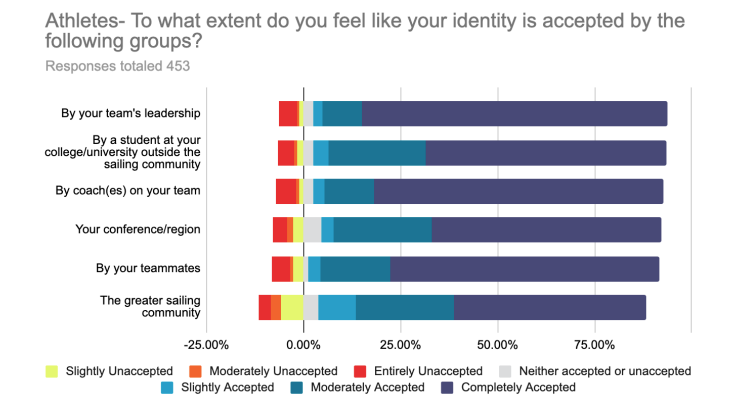
According to the question on racial identity, of those athletes who responded, 82% identify as white or Caucasian, with the remainder responding as Asian (including Middle Eastern), Black or African American, Native American or Indigenous, Native Hawaiian or Other Pacific Islander, and 6% identifying with two or more races. A similar distribution was quoted among the participating coaches. One difference we did spot in the survey report was that 10% of athletes shared that they are Hispanic or Latinx, in contrast to the 2020 iteration of the survey in which 5% of athletes shared that they were Hispanic or Latinx. This is all quite subjective, as the report also states that in the latest survey the corresponding question had been changed to request a “Yes” or “No” answer: “Are you of Hispanic or Latino/a origin?”
In a nutshell, the survey delved into many aspects of culture, race, gender, sexuality, socioeconomic status — it even looked at positions respondents hold on a boat and how that might be affected by their identification within any of the categories. Derogatory language was also on the table; as you can imagine, more than a few of the respondents reported having heard derogatory language. While it does appear to be more common at a regatta or team event, the most common use was reported in relation to “Sexism/Gender.”
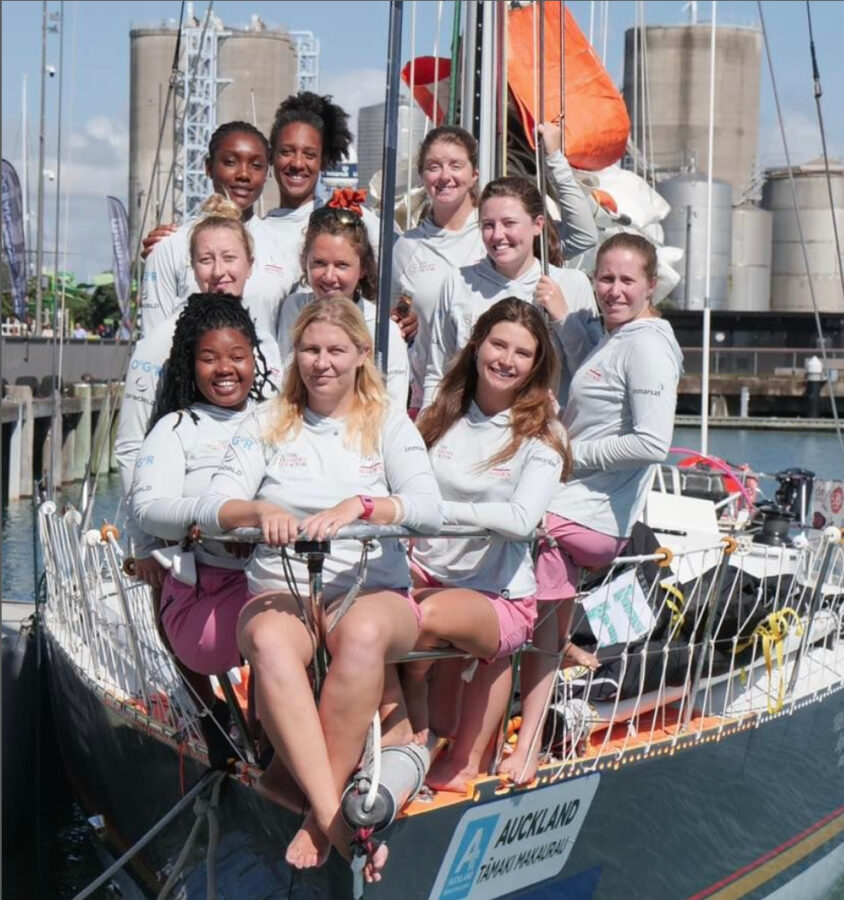
We’re not here to judge, but from our overview of the report it seems we have a good deal to learn and implement if we want our sport to grow and evolve from what one sailor recalled hearing often during their early days on the water: “male, pale and stale.” We’re not here to judge, but we can see how that phrase might have come about.
To get the full picture, not just our very brief overview, which to be honest, in itself can be biased because we’ve highlighted only a small number of facts that stood out for this writer. Someone else reading the report may find opposing information. So we encourage you to take a look and determine for yourself what shape collegiate sailing is in, and what it needs (if anything) to improve. Again, this report focuses on collegiate sailing, but it is still somewhat representative of the sport as a whole and can serve to give an overview of where we’re at, in relation to where we can be in the future.
Read the full report here.
You can also access the previous report here.
Westwind Yacht Management — Washing, Waxing and Varnishing
Westwind Yacht Management: Premiere Yacht & Fleet services for the San Francisco Bay Area.

